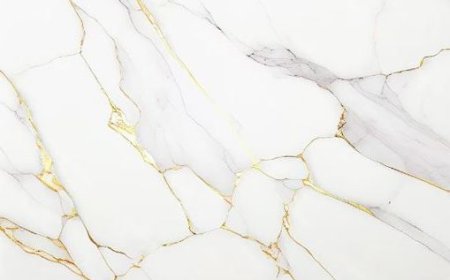Interior Design Dubai: Blending Culture, Innovation, and Luxury
Interior Design Dubai: Blending Culture, Innovation, and Luxury

Interior Design Dubai: Blending Culture, Innovation, and Luxury
Dubai, a city synonymous with architectural marvels and opulent lifestyles, is also home to a vibrant and diverse interior design scene. From sleek, ultra-modern penthouses to traditional majlis-inspired homes, interior design in Dubai reflects a unique fusion of cultures, innovation, and aspirations. As the city continues to expand both vertically and culturally, the demand for unique, functional, and aesthetically pleasing interiors continues to rise.
The Essence of Interior Design in Dubai
Interior design in Dubai is not merely about decorating a space; it is about storytelling. Every room, every fixture, and every fabric narrates a tale of taste, culture, and identity. What makes Dubai's interior design landscape truly distinctive is its ability to harmonize international design philosophies with the rich cultural heritage of the Middle East.
Designers in the city often draw inspiration from Islamic architecture, with intricate geometric patterns, ornate carvings, and calligraphy elements seamlessly incorporated into contemporary spaces. However, Dubai's cosmopolitan nature also means that minimalism, Scandinavian simplicity, and industrial chic coexist harmoniously with traditional aesthetics.
Influences Shaping Dubais Interior Design
Dubai's interior design landscape is shaped by a blend of influences, both local and global. Given the citys diverse population, homeowners and designers bring in tastes from Europe, Asia, Africa, and the Americas, resulting in spaces that are truly international in flavor.
Yet, traditional Emirati elements remain a strong influence. These include:
-
Majlis Style Spaces: Central to Emirati culture, the majlis is a place of gathering and hospitality. Modern interiors often reinterpret the majlis with luxurious seating, rich fabrics, and ambient lighting.
-
Islamic Patterns and Motifs: Designs inspired by Islamic artcharacterized by symmetry, balance, and intricate detailare often used in tiling, wall treatments, and even furniture.
-
Natural Materials: Use of stone, wood, and desert-inspired hues pays homage to the regions natural landscape while offering a grounding contrast to the city's urban vibe.
Key Trends in Interior Design Dubai
Interior design trends in Dubai evolve with global influences, yet they are tailored to suit the local lifestyle, climate, and cultural preferences. Some of the key trends currently shaping homes and commercial spaces include:
1. Open-Concept Living
Open-concept designs are increasingly popular in Dubais modern residences. These layouts eliminate unnecessary walls and partitions, allowing for a smooth flow of light and air. The result is a feeling of spaciousness and modernity, which suits Dubais luxury apartments and villas.
2. Smart Home Integration
Technology plays a vital role in interior design in Dubai. Smart lighting, climate control, automated curtains, and integrated entertainment systems are now standard in many high-end homes. Interior designers work hand-in-hand with tech consultants to ensure that functionality does not compromise aesthetics.
3. Sustainable and Eco-Friendly Designs
Sustainability is becoming a key concern for homeowners and designers alike. With the region's climate challenges and growing environmental awareness, the use of eco-friendly materials, energy-efficient lighting, and sustainable furniture is on the rise. Vertical gardens, solar-powered lighting, and reclaimed wood furniture are popular choices.
4. Luxury and Opulence
Dubai's reputation for luxury is mirrored in its interior designs. Lavish chandeliers, marble flooring, gold accents, and plush fabrics are commonly used to create an aura of grandeur. However, there is a growing trend toward understated elegance, where luxury is conveyed through craftsmanship, texture, and detail rather than excess.
5. Bespoke Design Solutions
Personalization is a defining trait of interior design in Dubai. Clients often seek bespoke solutions tailored to their lifestyle and preferences. Whether its custom cabinetry, handcrafted lighting fixtures, or art installations, bespoke elements ensure that every space feels unique and personal.
Residential Interior Design: Creating Homes with Heart
Residential interior design in Dubai spans a wide spectrumfrom opulent villas with classical interiors to minimalist lofts in the citys business districts. Regardless of size or style, the goal remains the same: to create spaces that reflect the personality and lifestyle of the occupants.
Designers pay special attention to:
-
Living Areas: These are often open and multifunctional, with zones for entertaining, relaxing, and dining. Comfortable furniture, layered lighting, and thoughtful color schemes set the mood.
-
Kitchens and Bathrooms: High functionality meets high design. Integrated appliances, smart storage, and premium finishes define these areas.
-
Bedrooms: Personal sanctuaries with soft lighting, calming palettes, and custom wardrobes designed for both comfort and luxury.
-
Outdoor Spaces: With the year-round sunshine, balconies, terraces, and gardens are designed as extensions of the indoor living space, often featuring outdoor lounges, water features, and even kitchens.
Commercial and Hospitality Interior Design
Dubais booming tourism and business sectors have led to a surge in commercial interior design projects. From hotels and resorts to office towers and retail outlets, the focus is on creating immersive experiences that align with the brands identity.
In hospitality design, the emphasis is on creating a sense of escapism and luxury. Lobbies become art galleries, suites feel like private sanctuaries, and every corner is Instagram-worthy. Lighting design, in particular, plays a pivotal role in setting the right mood.
Corporate interiors, on the other hand, aim to balance professionalism with creativity. Biophilic design, breakout areas, collaborative spaces, and ergonomic furniture are key features in modern offices.
The Role of Cultural Sensitivity
Designing in Dubai requires a deep understanding of cultural nuances. Respect for privacy, family structure, and religious practices must be considered. For instance, many homes are designed with separate entrances and living areas for guests and family members. Prayer spaces are also a common inclusion.
Designers must strike a balance between creativity and cultural appropriateness, ensuring that the final result is both beautiful and respectful.
Future Outlook
The future of interior design in Dubai looks dynamic and promising. As the city gears toward becoming a global hub for creativity and innovation, interior spaces are expected to become even more intelligent, sustainable, and culturally aware.
Designers will likely continue to push boundaries by incorporating virtual and augmented reality in design presentations, using AI to optimize space usage, and exploring new materials and construction techniques.
The rise of wellness-focused design is also notable. Expect more interiors designed to promote mental well-being, physical health, and emotional comfortthrough natural light, organic materials, acoustic optimization, and calming layouts.
Conclusion
Interior design in Dubai is a reflection of the citys spirit: ambitious, diverse, and ever-evolving. It celebrates the intersection of tradition and innovation, luxury and functionality, personal taste and cultural identity. Whether shaping a family home or a commercial landmark, interior design in Dubai is about crafting experiences that resonate deeply with those who live in and visit these spaces. As the city continues to grow and redefine itself, so too will its interiorseach space a mirror of its time, place, and purpose.

































